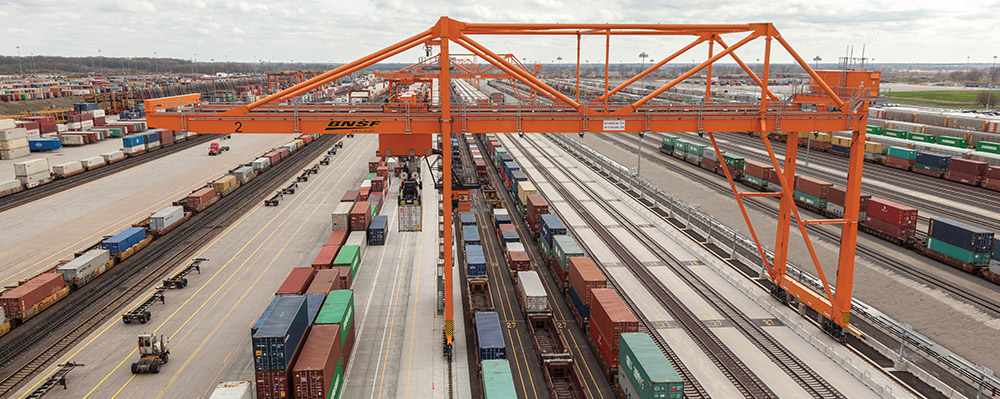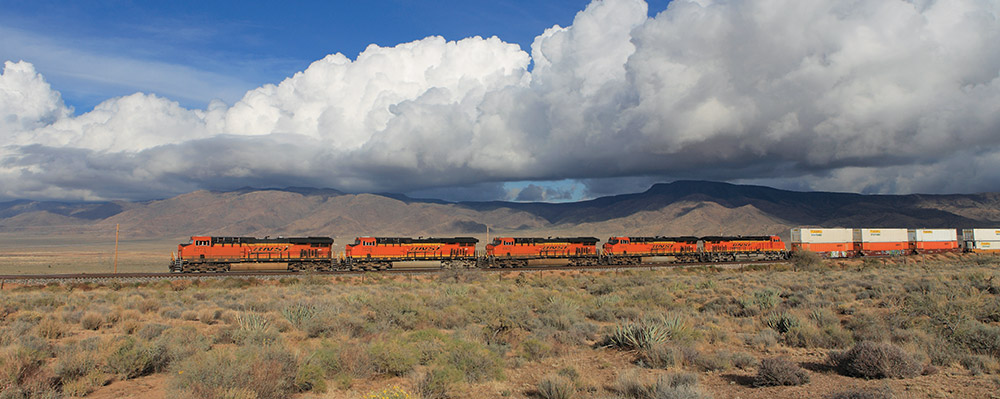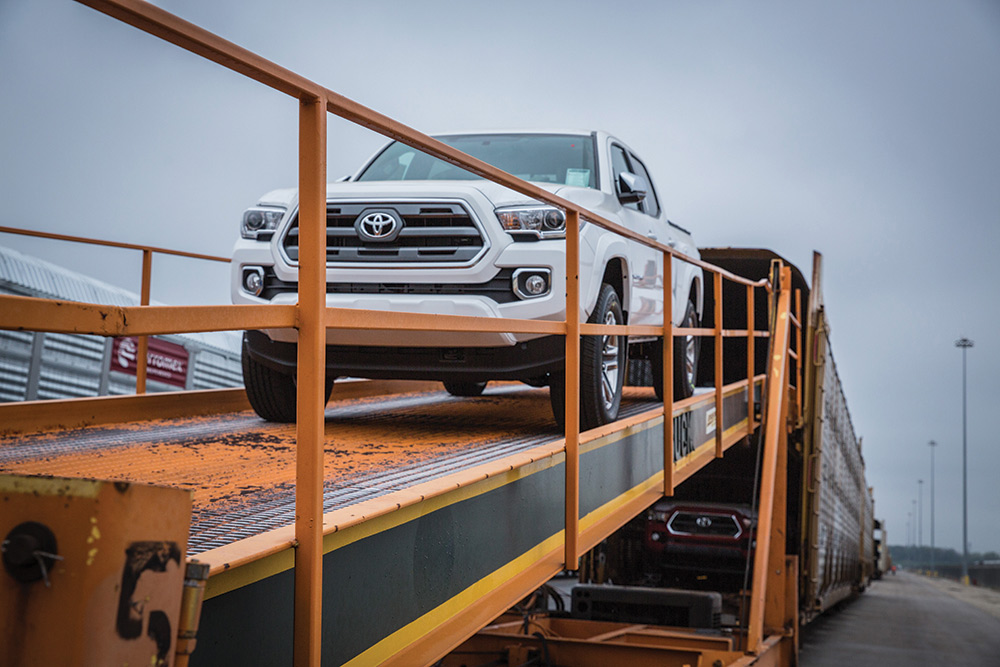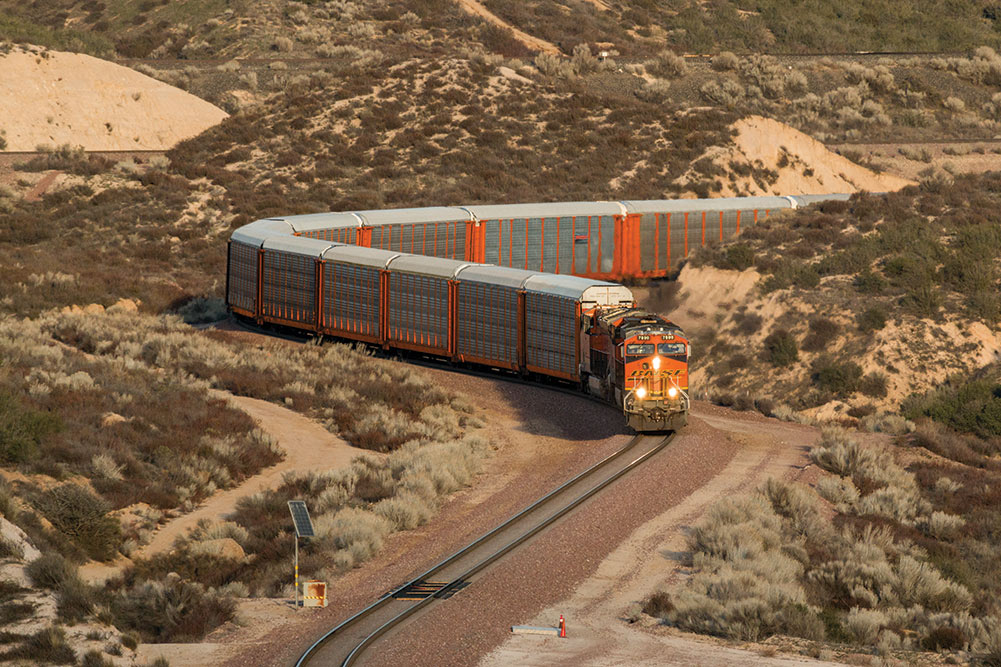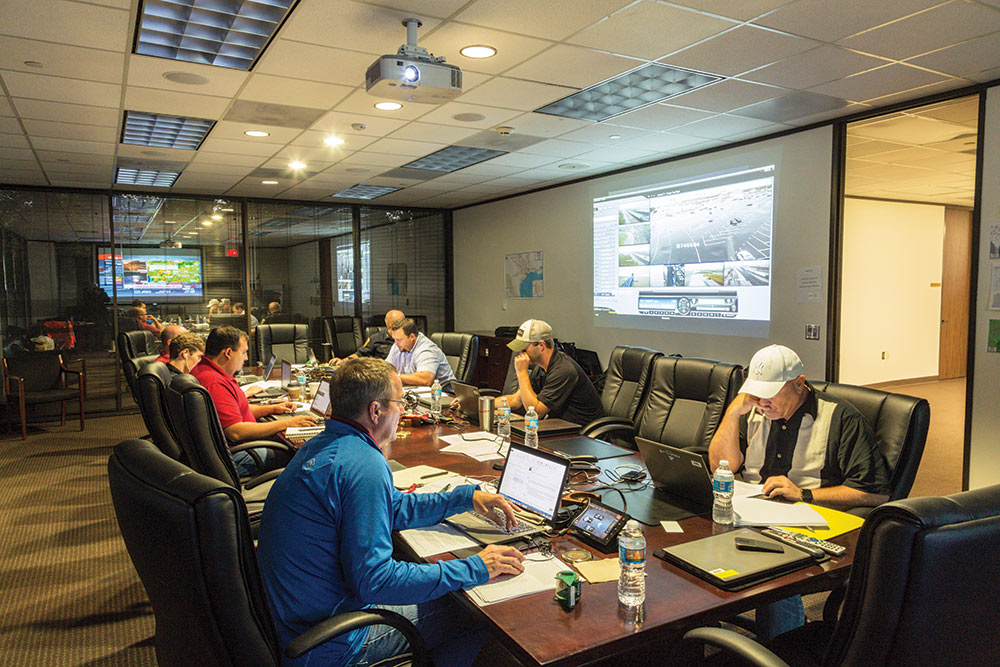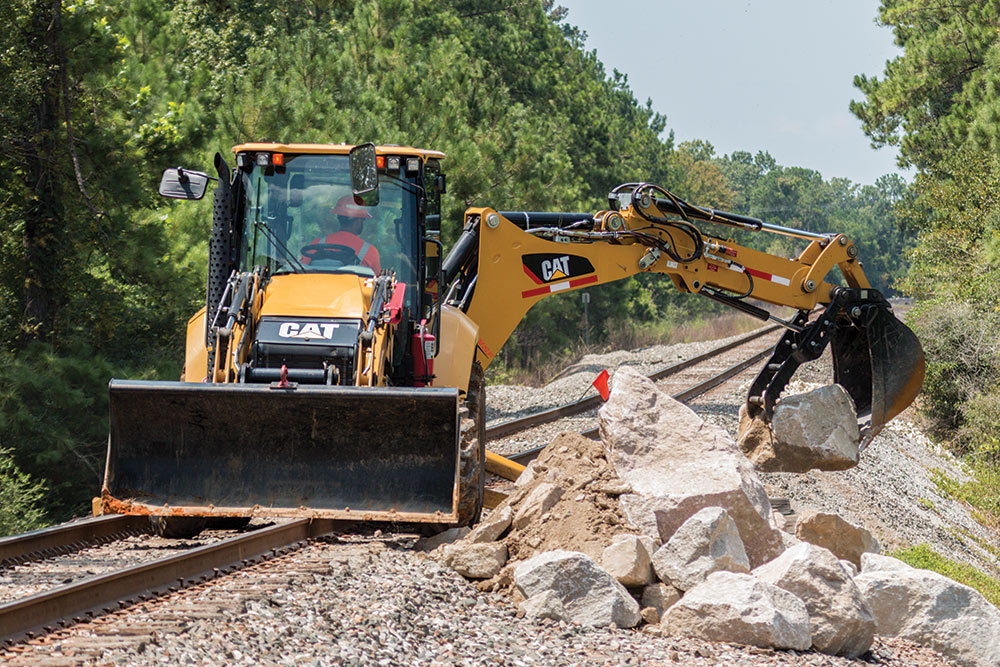Service
From completely refreshing our Network Operations Center to effectively responding to adverse weather, BNSF was focused on providing the best service possible in 2017.
Read More
Refreshing our Network Operations Center
In 2017, BNSF opened our newly refreshed Network Operations Center (NOC) in Fort Worth, Texas. The NOC is our major hub of train operations where hundreds of train dispatchers constantly communicate with other dispatchers, train crews, maintenance crews, terminal personnel and others to ensure the safe, fluid delivery of freight across our network. At any given time, there are 100 to 150 dispatchers on the NOC floor – which is as large as a football field – managing 1,400 trains and 205,000 railcars moving on the network.
The nine-month, nearly $20 million project included providing next-generation workstations, new floor design, an 18-foot-high seamless screen and improved lighting, ventilation and acoustics. A better working environment for our dispatchers and other staff increases their efficiency and enhances their decision-making, leading to safety and efficiency benefits for all BNSF customers.
At any given time, 100 to 150 dispatchers manage 1,400 trains on the BNSF network.
Helping Customers Succeed
Reflecting their confidence in our ability to deliver reliable and efficient transportation solutions, BNSF customers collectively invested nearly $7.7 billion in 2017 for new or expanded BNSF rail-served facilities. This record level marks the seventh consecutive year BNSF customers and local economic development organizations have invested more than $1 billion for new or expanded facilities. These investments are expected to generate approximately 3,500 new jobs in local communities.
Customer investment highlights include:
Iowa Fertilizer Company
Located in Wever, Iowa, the $3 billion fertilizer plant began production in 2017, bringing 220 permanent jobs to the area.
Spectrum Brands
The hardware and home improvement division of Spectrum Brands consolidated its operations from two distribution centers to one 927,000-square-foot facility at Logistics Park Kansas City in Edgerton, Kansas.
Ganahl Lumber Company
At its new $50 million rail-served facility in Torrance, California, Ganahl has hired 91 employees, with plans to hire up to 140.
BNSF customers invested a record neraly $7.7B in 2017 on new or expanding rail-served facilities.
2017 Capital Investments
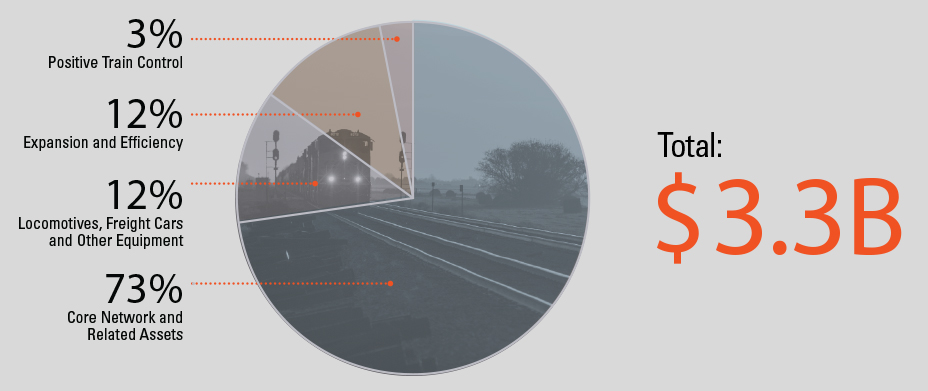
Results of Capital Investments

What We Carried in 2017
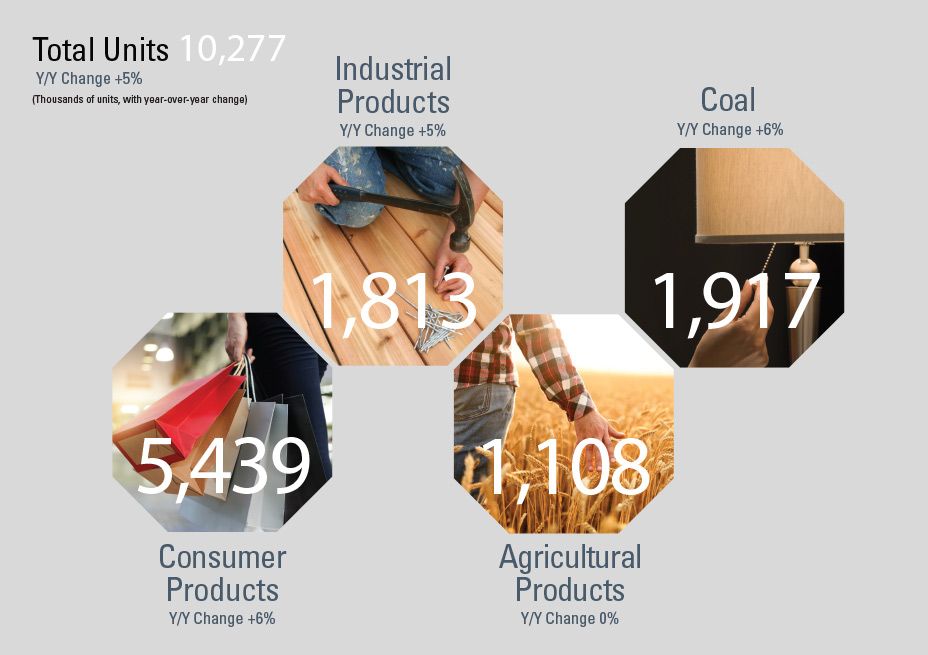
Expanding and Enhancing Intermodal Facilities
BNSF’s domestic intermodal business continues to grow as trucking capacity tightens and freight converts from over the road to rail. In 2017, we set a new weekly volume record for all freight of about 220,000 units the week after Thanksgiving, spurred by a busy online holiday shopping season.
We continue to match our investments to maintain our network and handle our customers’ freight demands. At our intermodal facilities this means adding more track to accommodate more trains; adding more cranes to load and unload those trains more quickly; and adding more parking to accommodate more trailers and containers waiting to be picked up or loaded onto trains. These three capacity components work together to provide better throughput and consistency at our facilities.
A good example of effective capacity enhancement is the multi-year expansion at our Logistics Park Chicago Intermodal Facility (LPC), where we have added six widespan cranes and six stacking cranes that operate over new production tracks. Each of the widespan cranes can reach six tracks without repositioning. These cranes produce zero emissions and significantly reduce the number of trucks needed to move containers in the facility. We also doubled the production track at LPC and added more support track, enabling us to arrive, depart and process more trains.
Other intermodal facilities where we expanded capacity in 2017 include:
- Los Angeles Intermodal Facility (added production track)
- San Bernardino (California) Intermodal Facility (added production track and parking stalls)
- Corwith (Illinois) Intermodal Facility (added production track and the world’s first cantilevered rubber-tired gantry cranes. The cantilever feature allows the cranes to reach a wider area but still operate within the traditional dimensions of crane pads.)
- Alliance (Texas) Intermodal Facility (added production track and parking stalls)
Improved processes and technological innovations also go a long way toward improving efficiency. In 2017, we completed the installation of Automated Gate Systems (AGS) at our Phoenix, Houston (Pearland) and St. Paul, Minnesota, intermodal facilities. The addition of AGS at these facilities means that more than 85 percent of the freight that moves in and out of our intermodal facilities will go through an automated gate. When used in conjunction with the BNSF RailPASS mobile app, drivers can pass through the AGS in as little as 30 seconds, making it easier and faster for them to move freight in and out of our facilities.
Adding BNSF Certified Sites
In 2017, BNSF added three new BNSF Certified Sites to our Site Certification Program, bringing the total to 13 sites. To select locations, our Economic Development team conducts in-depth reviews to determine if sites meet our readiness standards, which are intended to streamline development opportunities for our customers. In fact, shippers who build new rail-served facilities on a BNSF Certified Site are expected to save six to nine months of construction time as a result of the site’s advanced level of preparedness for development.
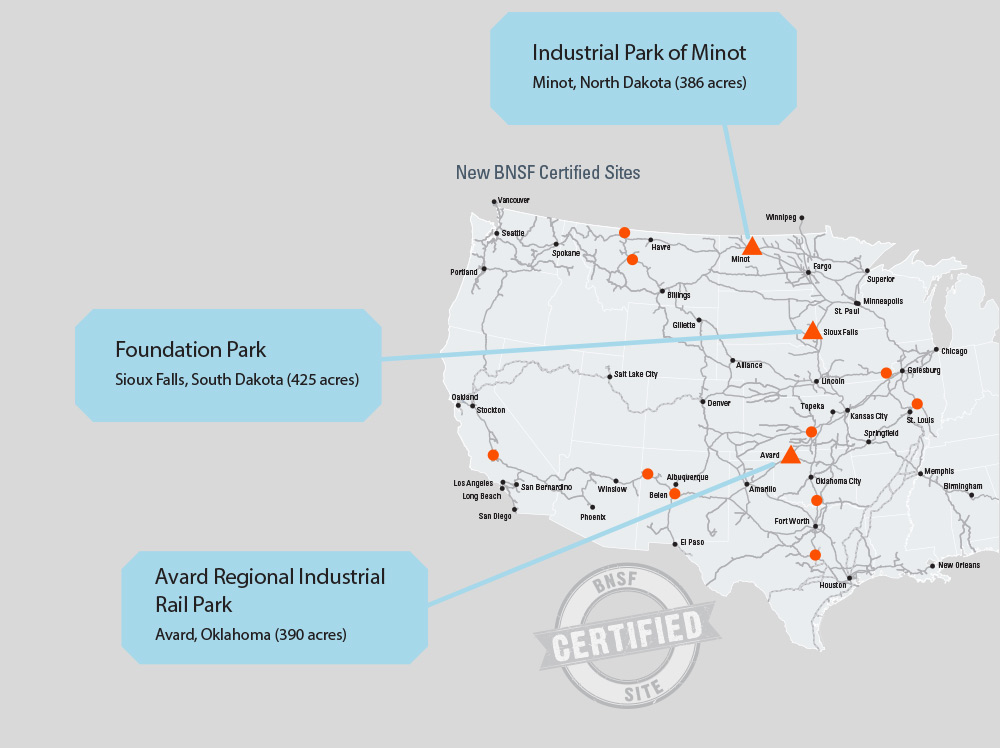
Recognition for Service
BNSF is focused on delivering the finest in customer service and reliability to all our customers. Customer recognition received in 2017 for our high levels of service excellence included:
- 2016 President’s Award for Logistics Excellence by Toyota Logistics Services
- 2016 Rail Carrier of the Year Award from C.H. Robinson
- 2016 Innovation/Value Delivery Award from Andeavor
Maintaining Bridges
The BNSF Engineering team’s efforts in 2017 included completing two major bridge projects. In Memphis, BNSF finished repairs on the Memphis Bridge, the fourth longest bridge on the BNSF network, spanning the Mississippi River between West Memphis, Arkansas, and Memphis, Tennessee. Work included rebuilding more than 50 percent of this river crossing, using modern steel girders supported by new concrete piers.
BNSF also replaced the Camas Bridge spanning the Washougal River in southern Washington. Efforts included replacing the bridge’s old trusses with new approach spans and a 1.3-million-pound truss. Both projects were part of our Heavy Bridge Program aimed at maintaining infrastructure integrity, safety and reliability and extending the lives of these essential assets.
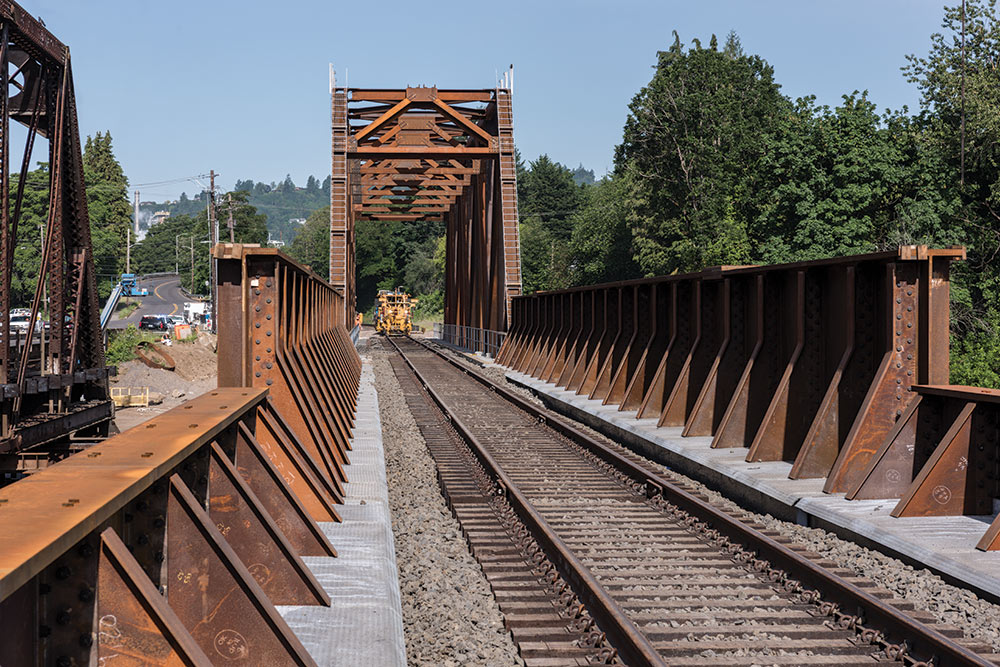
Responding to Adverse Weather
In 2017, BNSF responded to several significant weather events, including ice storms, an avalanche, flooding and Hurricane Harvey. Midyear, a series of flooding events tested BNSF operations in the central United States, and in late summer we addressed the major challenges created in southeastern Texas in the aftermath of Hurricane Harvey. In each instance, BNSF teams, working in difficult conditions, safely repaired and rebuilt track and structures and restored service to customers as expeditiously as possible.
Handling Harvey
In anticipation of Hurricane Harvey, BNSF established a Hurricane Command Center in The Woodlands, Texas, where BNSF team members worked round the clock to manage our storm response. BNSF crews were mobilized to quickly respond to washouts and the need for track repair. After the storm, which dropped 50 inches of rain in some areas, BNSF crews moved in to repair damaged bridges, track and other facilities. Several subdivisions were restored within days, and after two weeks of hard work on the part of BNSF employees, contractors and customers, BNSF service was restored on all subdivisions impacted by this historic weather event.
UP NEXT:
Environment
